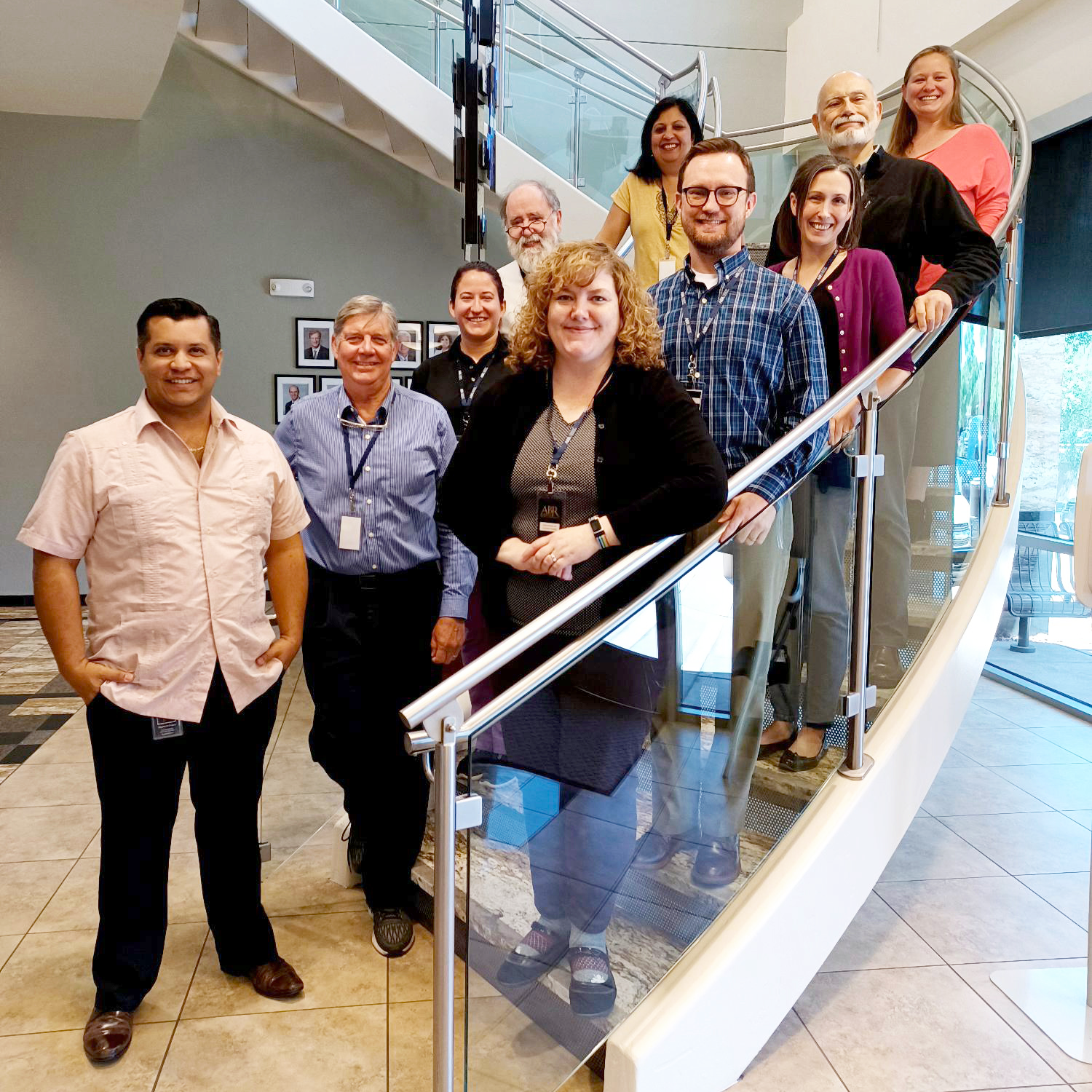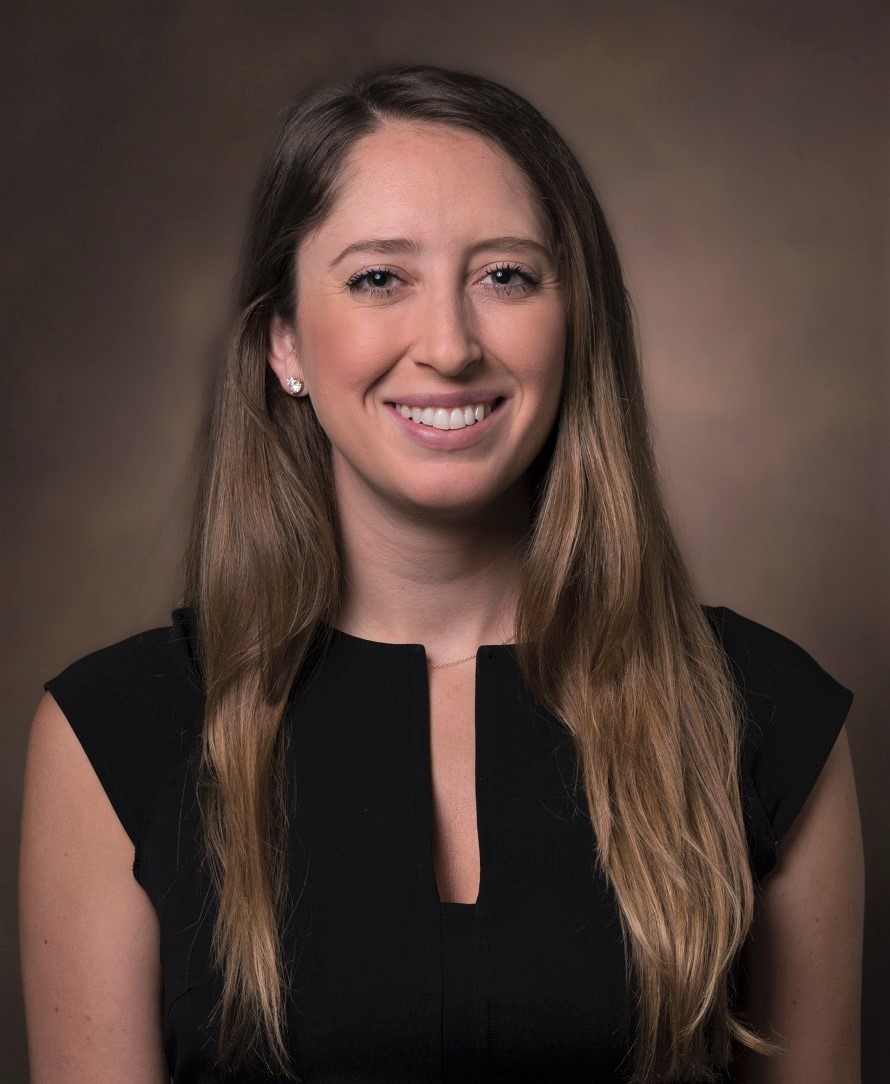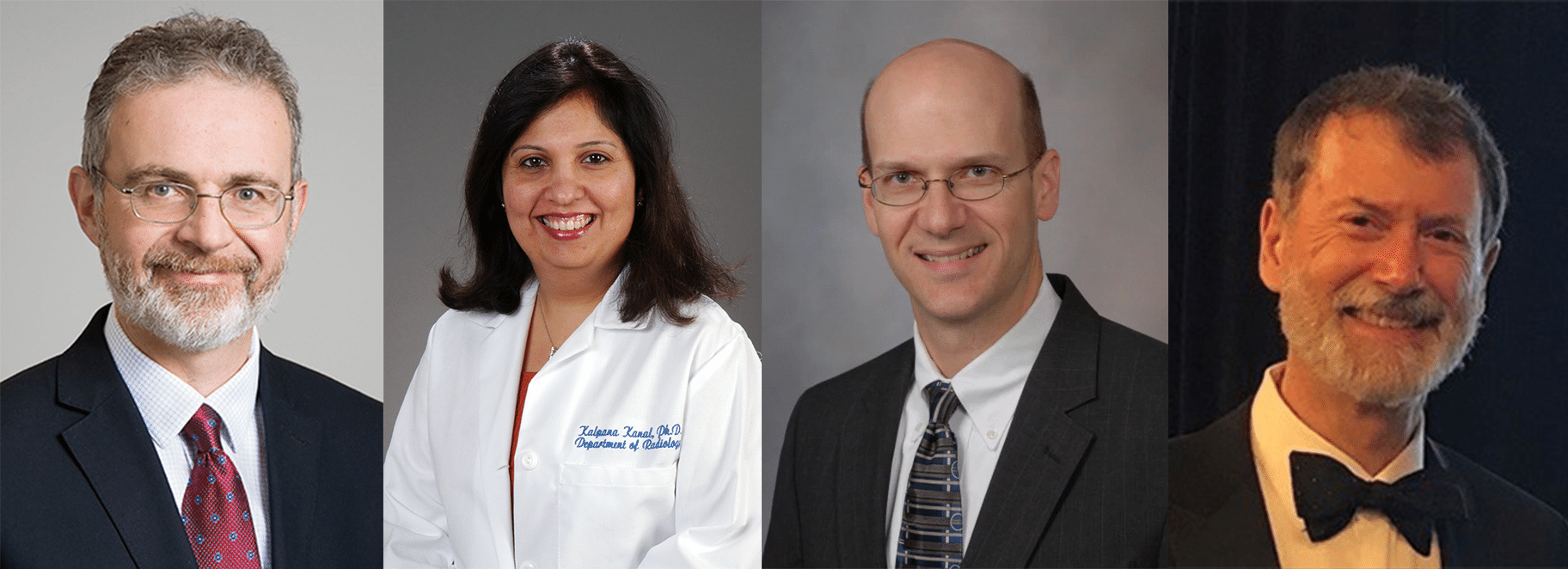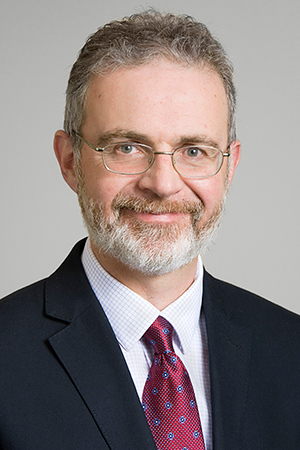August 2022 | Volume 15, Issue 4

Volunteers on the Oral Exam Diagnostic Medical Physics Committee traveled to Tucson for an in-person meeting at ABR headquarters in May 2022. Back row (from left to right): Dago Esquer (Exam Developer), David Hintenlang, Lisa Genovese, David Gauntt, Kalpana Kanal (Trustee). Front row: Jessica Clements (Chair), Jonathon Mueller (Associate Chair), Katie Hulme, Russ Ritenour, Julie Howell (Exam Developer).

Fall Board Meeting Brings Transitions, Including Beam Editor
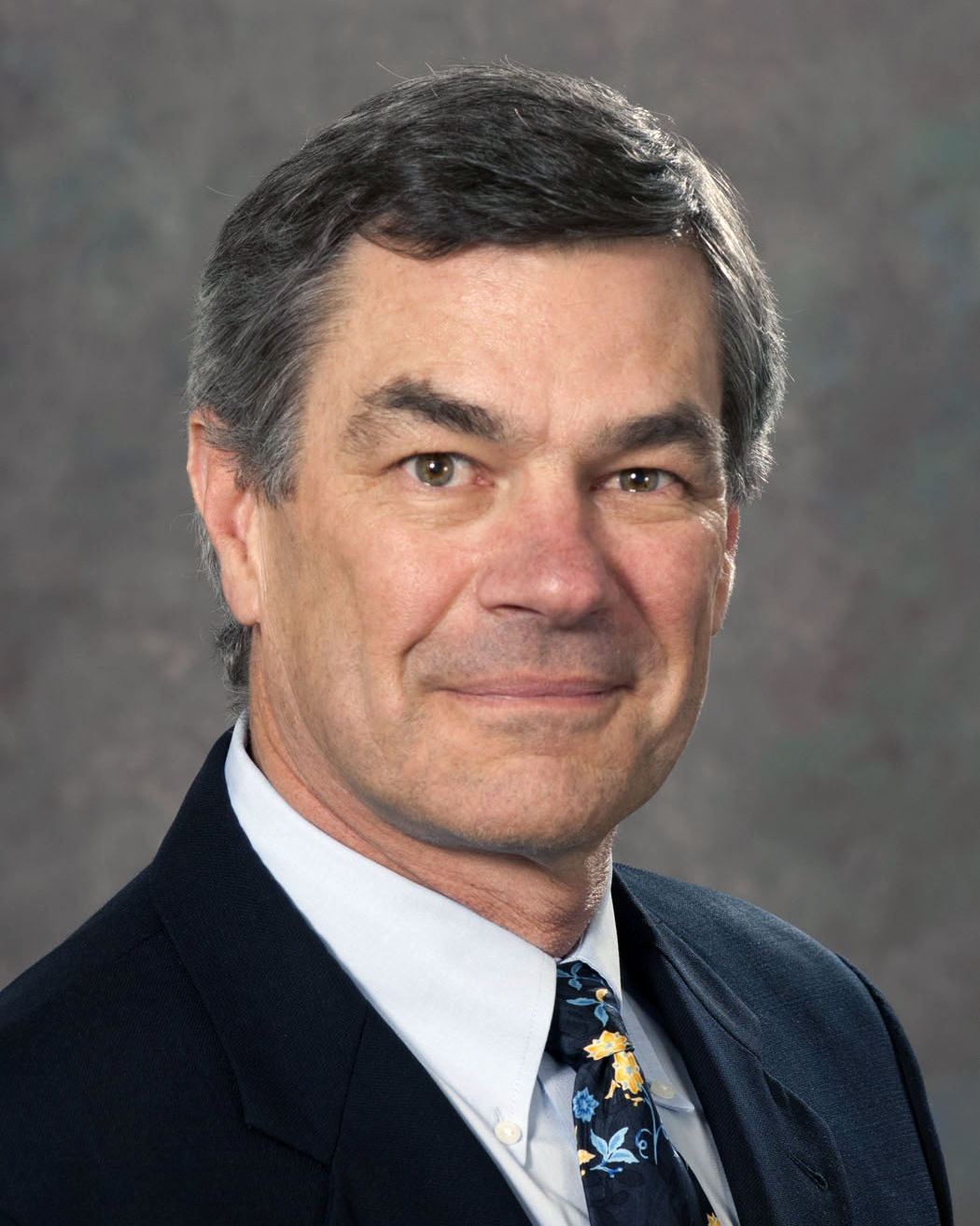
By J. Anthony Seibert, PhD, ABR Governor
2022;15(4):1
We are approaching the fall meeting of the American Board of Radiology, which marks the beginning and ending appointments for volunteers serving on the Board of Governors (BOG) and the Board of Trustees (BOT). This year’s meeting is particularly relevant for me, as I am ending my time as a board member and as editor of The Beam. My participation as a volunteer for the ABR began in 1994, when I was an item writer for the Part 2 Certifying Exam in Diagnostic Medical Physics (DMP), and continued through many different committees, exam assembly meetings, and oral exams over nearly three decades. In 2013, I was selected as a trustee with the DMP portfolio and served in that capacity for four years. In the middle of my first term, the Board split into the BOT and BOG, and in 2017, I was asked to join the BOG to fill the spot vacated by Geoff Ibbott, now our associate executive director (AED) for medical physics.
At the same time, I was also asked to become editor of The Beam, as trustee and editor Lane Donnelly rotated off the Board. Initially feeling a bit overwhelmed, I was welcomed by ABR communications staff and greatly assisted in getting up to speed. Many changes were implemented over the first year, including converting from three issues per year to six, and ultimately establishing the “Beam team” consisting of myself, Heather Hopkins, David Short, David Laszakovits, Rodney Campbell, and Brent Wagner. It is now with great confidence that I turn over the editorship of The Beam to my friend and colleague on the BOG, Mimi Newell. She has a great perspective on the ABR through her time on the BOT and BOG and is currently serving on the American Board of Medical Specialties Committee on Continuing Certification. Her insights and creativity will provide a different perspective on content in The Beam, while still providing the readership important news, guidance, and directives of the ABR, in addition to timely announcements – a great reason for you to look forward to each future publication. I certainly will be!
Click HERE to read more.

Serving as ABR Board President a Highlight of Career
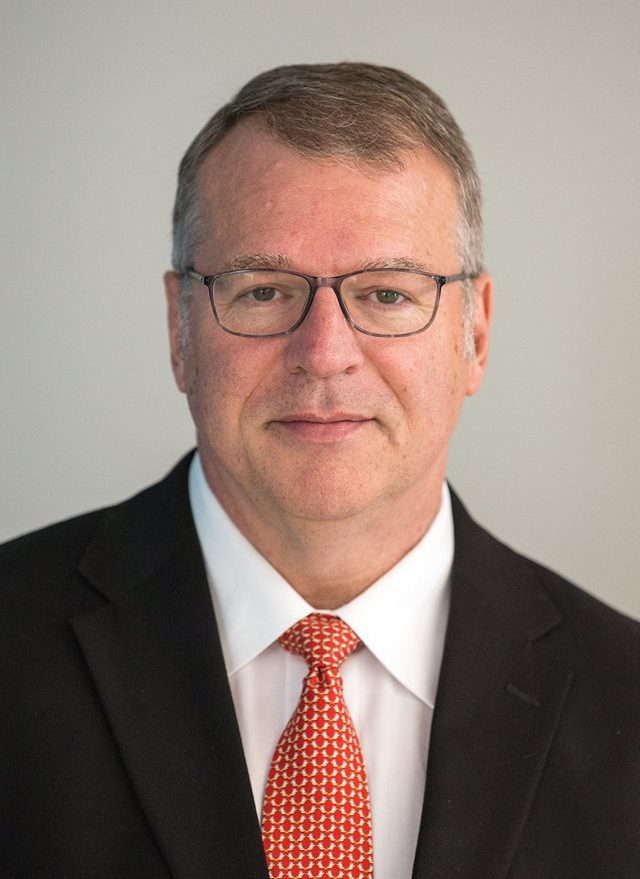 By Vincent P. Mathews, MD, ABR President
By Vincent P. Mathews, MD, ABR President
2022;15(4):2
At the end of the September 2022 ABR Board of Governors meeting in Boston, I will conclude my term as ABR president. At that time Dr. Bob Barr will become president, and Dr. Cheri Canon will become president-elect. There will also be changes with the Board of Trustees: Dr. Matt Podgorsak, one of our medical physics trustees, will replace Dr. Don Flemming as Board of Trustees chair. Dr. Flemming will continue as a member of the Board of Governors and will be replaced as MSK trustee by Dr. Dan Davis.
It has been an honor to be the ABR President since June 1, 2020. My first official communication as president was to notify our community that we were transitioning to remote exams because of the uncertainties created by the COVID-19 pandemic. I am very proud of the ABR staff and volunteers who have performed incredible work to successfully develop and launch the remote platform. I am also gratified by the engagement of diplomates and leaders of key radiology societies during this transition. Their feedback continues to be invaluable as we critically evaluate our processes for providing a rigorous and credible assessment of our candidates and diplomates in order to meet the ABR mission to serve the public and the profession.
Click HERE to read more.

ABR Seeks Stakeholder Input on DR Initial Certification Process
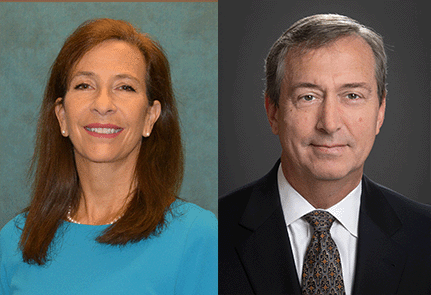 By Desiree E. Morgan, MD, ABR Trustee, and Brent Wagner, MD, MBA, ABR Executive Director
By Desiree E. Morgan, MD, ABR Trustee, and Brent Wagner, MD, MBA, ABR Executive Director
2022;15(4):3
In response to the COVID-19 pandemic, the ABR reevaluated and changed many certification processes over the past 30 months across all disciplines (radiation oncology, medical physics, interventional radiology, and diagnostic radiology) , and the radiology community has for the most part responded with satisfaction.
Armed with lessons learned relating to exam administration possibilities, in October 2021, the ABR Board began considering the effectiveness and appropriateness of DR Initial Certification. The process thus far has addressed a series of questions including: the intended purpose of the exams, the effectiveness of the current model as a testing instrument for that purpose, and whether there are potential opportunities for improvement via alternative methods of assessment.
Perceptions of the exams have understandably varied over the 10 years since the introduction of the current model, which consists of the Qualifying (Core) Exam at the end of the third year of residency and the Certifying Exam approximately 15 months after completion of the final year. Board members, most of whom are teaching faculty, recognize that thoughtful inquiry and disciplined efforts to set aside assumptions about the appropriateness of the exams as testing instruments are not only a requisite part of a critical review but also represent a responsibility of the ABR as it responds to new technology and changing practice paradigms.
Click HERE to read more.

President-elect Describes BOG Duties
2022;15(4):4
Incoming ABR President Robert M. Barr, MD, describes the responsibilities of the nine members of the Board of Governors, which include, among other duties, ensuring the prudent use of resources in support of the ABR mission and serving as ambassadors to the public and the greater radiology community.

Unique Role Bridging Two Boards Brought Challenges and Rewards
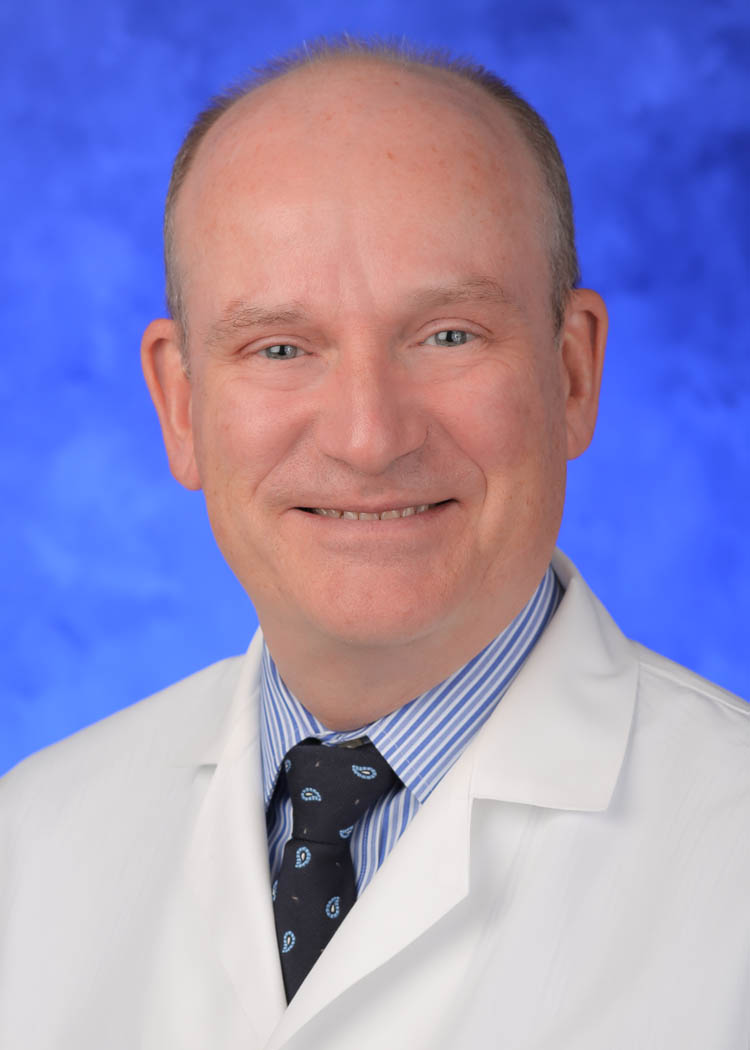 By Donald J. Flemming, MD, ABR Board of Trustees Chair
By Donald J. Flemming, MD, ABR Board of Trustees Chair
2022;15(4):5
I have been privileged to be the chair of the Board of Trustees (BOT) for the past four years. I followed in the giant footsteps of Dennis Balfe, MD, and Donald Frush, MD, who preceded me, and I will hand over the responsibilities of the position to Matthew Podgorsak, PhD, in September.
The BOT chair is a unique and challenging position in ABR governance that was created when the Board was split into two bodies, the Board of Governors (BOG) and the BOT. While the BOG has primary fiduciary responsibility for all aspects of ABR governance, its primary focus is strategic, policy, and financial matters. The BOT’s focus is limited to the incredibly important task of advancing the quality, relevance, and effectiveness of ABR exams. The BOT comprises diplomates from diagnostic radiology, interventional radiology, medical physics, and radiation oncology. The trustees are selected from dedicated ABR volunteers based on their past performance on ABR committees and whether their specific skills and experience meet the diverse needs of the BOT. Each discipline selects a vice chair who is later approved by the entire BOT.
Click HERE to read more.

Process Ensures that ABR Gets Qualified Volunteers
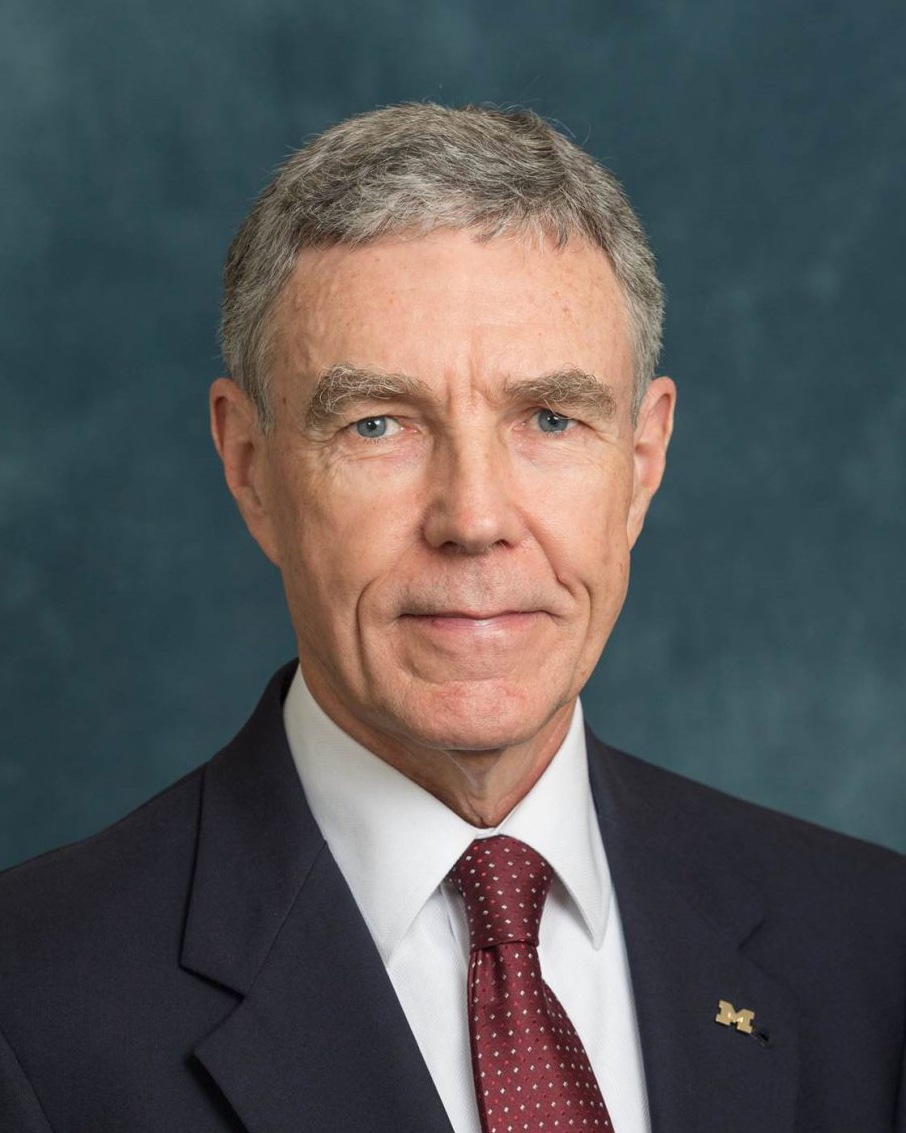 By N. Reed Dunnick, MD, ABR Associate Executive Director for Diagnostic Radiology
By N. Reed Dunnick, MD, ABR Associate Executive Director for Diagnostic Radiology
2022;15(4):6
The ABR could not exist without the many volunteers who define the exam blueprints, contribute case material, write items, adjudicate problem questions, and determine the cut scores. In addition, our leadership — officers, governors, and trustees who determine policy and procedures — are all volunteers.
How are ABR volunteers selected? ABR diplomates who are participating in Continuing Certification, including diagnostic radiologists, radiation oncologists, interventional radiologists, and medical physicists, are eligible to serve as volunteers. The diplomate begins the process by submitting an online application to the ABR. In addition to one’s curriculum vitae, the application form asks for areas of subspecialty expertise and the committees on which the applicant is most interested in serving. It also advises applicants if occasional travel to committee meetings is expected.
Click HERE to read more.
There’s Value in Attending Annual Conferences
2022;15(4):7
SIR, SPIR, ISET, LEARN, GEST, SIO, CIO, WAIS, CIRSE, and SPECTRUM are just a few of the key annual educational conferences dedicated to interventional radiology. Numerous additional symposiums and courses concentrate on each facet of radiology.
Attending my first IR conference as a medical student was one of my best decisions. It provided a glimpse into my future and offered friendship, mentorship, and the opportunity to meet interventional radiologists from across the nation. With approximately 3,000 practicing interventional radiologists in the U.S., we are a close-knit group. Just attend the opening plenary session at an annual SIR conference, and you will feel a sense of community. The camaraderie that comes with an in-person meeting cannot be matched virtually.
These invaluable interactions can enable you to discover mentors, serve on a panel, join a multicenter research project, or become part of a committee aligned with your interests. Moreover, conference settings offer ideal opportunities to meet leaders in the field and build your professional network, which could help you land your future job.
Click HERE to read more.

ABMS and ACGME: Six Core Competencies for Initial Certification
By Kalpana M. Kanal, PhD; Robert A. Pooley, PhD; and Matthew B. Podgorsak, PhD, ABR Trustees; J. Anthony Seibert, PhD, ABR Governor; and Geoffrey S. Ibbott, PhD, ABR Associate Executive Director for Medical Physics
2022;15(4):8
The American Board of Medical Specialties (ABMS) has published general standards that provide the broad structure for Initial Certification mechanisms developed by ABMS Member Boards. In 1999, the ABMS and the Accreditation Council for Graduate Medical Education (ACGME) adopted six core competencies for Initial Certification with the understanding that each ABMS Member Board would incorporate these core competencies into their standards for Initial Certification. The ABMS/ACGME competencies are recognized as integral to quality patient care and are common across the ABMS Member Boards while accommodating differences among the specialties.
The six core competencies are listed below. For each competency, we have quoted the ABMS text and followed that with examples of how the competency applies to medical physicists (in italics).
- Practice-based Learning & Improvement refers to the candidate’s ability to investigate and evaluate patient care practices, appraise and assimilate scientific evidence, and improve the candidate’s own practice of medicine, the collaborative practice of medicine, or both.
- Testing CT equipment and determining the reason for failed or unexpected performance results, conducting a literature search to look for scientific evidence for a particular practice or radiation dose trend to improve patient care and safety, conducting literature review and developing procedures for implementing a new treatment technique such as stereotactic body radiation therapy (SBRT)
Click HERE to read more.

Content Development for Radiation Oncology Qualifying and Certifying Exams
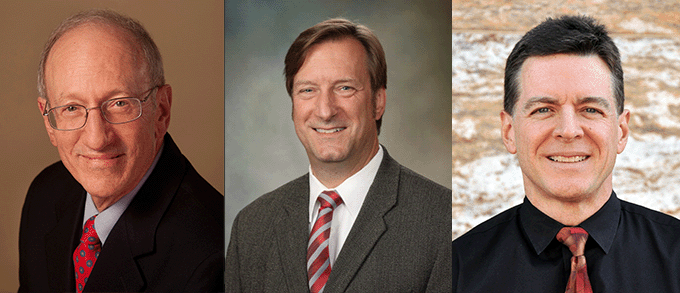 By Paul E. Wallner, DO, ABR Associate Executive Director for Radiation Oncology; Brian J. Davis, MD, PhD, ABR Trustee; and Anthony M. Gerdeman, PhD, ABR Director of Exam Services
By Paul E. Wallner, DO, ABR Associate Executive Director for Radiation Oncology; Brian J. Davis, MD, PhD, ABR Trustee; and Anthony M. Gerdeman, PhD, ABR Director of Exam Services
2022;15(4):9
Developing credible certification assessment instruments requires adhering to three foundational elements: security, validity, and relevance. Exam security is determined by the logistical arrangements of individual exam administrations, available technology, and pragmatic cost decisions. Metrics of validity are strictly determined by established psychometric principles and policies initially promulgated in 1966, as Standards for Educational and Psychological Testing, developed jointly by the American Psychological Association, the American Educational Research Association, and the National Council on Measurement in Education.1 Issues of relevance are not so clearly defined.
The Accreditation Council for Graduate Medical Education (ACGME) Radiation Oncology Review Committee (RO RC) is responsible for developing post-graduate training requirements in RO, including the attainment by trainees of specific skills, knowledge, and competencies that they deem to be essential. As guidance for the development of relevant assessment instruments, those requirements are sometimes generally defined. The RO RC requires that, “The program must provide instruction in the following areas: three-dimensional conformal radiation therapy; intensity-modulated radiation therapy; image-guided radiation therapy; stereotactic radiosurgery; stereotactic body radiotherapy; particle therapy; and concurrent chemo-radiotherapy,” among others.2
Click HERE to read more.

ABR Residency Leave Policy an Experience-Changer for Trainees
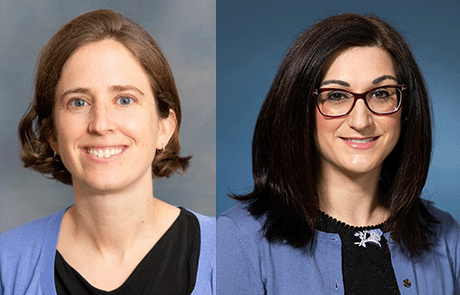 By Christine Cooley, MD, and Carolynn M. DeBenedectis, MD
By Christine Cooley, MD, and Carolynn M. DeBenedectis, MD
2022;15(4):10
Many of us who became parents during our residency training remember returning to work after six weeks or less of parental leave, emotionally and physically exhausted … babies not sleeping through the night nor having a predictable feeding schedule. Our hearts ached to spend just a little more time with them before returning to our unending lists of imaging studies and endless hours of call. For the past few years, radiology has made great strides in trying to make the field more welcoming for everyone, especially women, who have been underrepresented for too long.
Last July, the ABR made a significant reform to make radiology a more welcoming field for women: the initiation of its residency leave policy. This new policy not only allows ample time off (up to 32 weeks over four years) for parental or medical leave, it also gives program directors and trainees flexibility in how it is implemented. In little more than a year, program directors and residents have expressed the profound effect this policy has had on trainees’ lives and their subsequent satisfaction with their choice of radiology as a career. The following testimonials from current radiology residents and program directors describe these experiences.
Click HERE to read more.
Being an ABR Volunteer Helps Program Director Better Understand Candidate Experience
By Rodney Campbell, ABR Communications Manager
2022;15(4):11
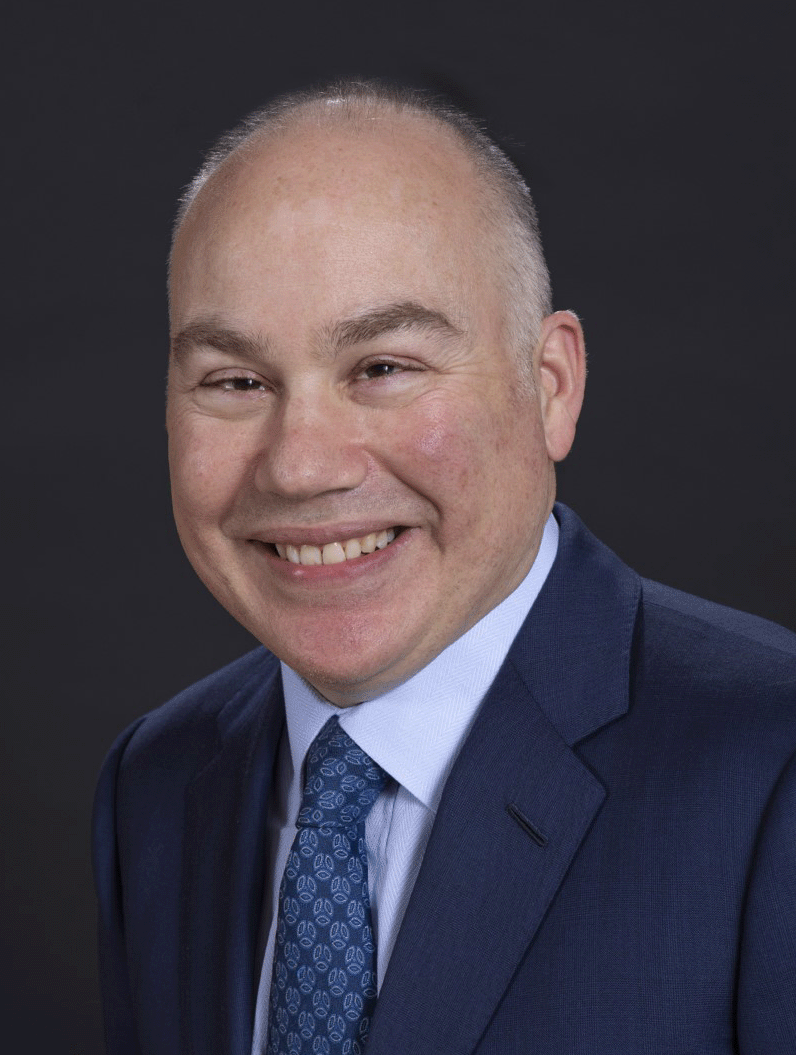
As a program director and ABR volunteer, Drew Caplin, MD, participates in both sides of the Initial Certification process.
Dr. Caplin is an associate professor of radiology at the Donald and Barbara Zucker School of Medicine at Hofstra/Northwell. He’s also an attending physician in interventional radiology at several hospitals in New York. Dr. Caplin became an ABR volunteer item writer in 2020 and was later asked to serve as an oral examiner.
Working with residents at Hofstra while participating in ABR exam development and delivery gives him a full view of the process.
“Being a volunteer gives me a real understanding of what the candidates’ experience is going be like, whether it’s the Core Exam or the Certifying Exam,” Dr. Caplin said. “It allows me to adjust curriculum or teaching style to better prepare them.”
A Qualifying (Core) Exam item writer and oral examiner, Dr. Caplin believes the Initial Certification goal remains the same regardless of his volunteer duties.
Click HERE to read more.
OLA Tips and Reminders for 2022
2022;15(4):12
Diplomates have answered more than 6.6 million OLA questions since the platform was introduced in 2019. They have also provided feedback on the usefulness of each item, which is greatly appreciated as we strive to improve the program. Here are a few things participants who are working toward their annual progress requirement should keep in mind.
Try to Stay on Pace
Since two questions are offered to most participants every week, 104 are available to be answered each year. To meet the annual progress requirement, most diplomates need to answer only half, or 52 questions per year. Furthermore, OLA allows substantial flexibility regarding when diplomates answer questions, as items do not expire until four weeks after they are offered.
Click HERE to read more.
Medical Physicist to Lead Board of Trustees
2022;15(4):13
Matthew B. Podgorsak, PhD, FAAPM, will replace Donald J. Flemming, MD, as chair of the ABR Board of Trustees (BOT) at the annual Board meeting in September.
Dr. Podgorsak has been an ABR volunteer for 18 years, serving on item-writing committees and as an oral examiner, and has been a member of the BOT since February 1, 2017. A specialist in therapeutic medical physics, Dr. Podgorsak is chief physicist of Roswell Park Comprehensive Cancer Center’s Department of Radiation Medicine in Buffalo. He is also an associate professor in the Department of Radiation Oncology at the Jacobs School of Medicine and Biomedical Sciences.
Dr. Podgorsak earned his undergraduate degrees at McGill University in Montreal, Canada, and his PhD in the Department of Medical Physics at the University of Wisconsin in Madison.
Visit the ABR Booth at an Upcoming Society Meeting
The ABR will be staffing a booth at the American Society for Radiation Oncology (ASTRO) annual meeting in San Antonio from October 23-26 and the Radiological Society of North America (RSNA) annual meeting in Chicago from November 27-December 1. At the ASTRO meeting, our booth (#2801) will be in the Exhibit Hall, not CE Central as in years past. If you have questions or feedback about our programs or exams, stop by and chat with one of our certification managers.

July 20 Blog
With a Little Effort, #SoMe Can Become #SoYou
July 16 Blog
They’re Qualified to Talk About Their Biggest Exam
July 5 Blog
Early in His Career, He’s Happy to Have OLA Option
June 15 Blog
Radiology: Perfect Intersection of Medicine and Technology
June 7 Blog
Radiology Applicant Working Group Helps Future Residents in the Virtual Match Era
May 31 Blog
New Residents Ready to Continue Their Education in July


